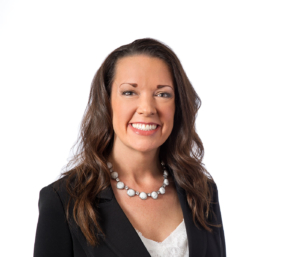 August 21, 2020
August 21, 2020
On Tuesday, August 18, 2020, Governor Mike DeWine announced that all sports (both contact and non-contact) would be permitted to move forward this fall. The Order, issued by the Interim Director of the Ohio Department of Health (ODH) has been in effect since Wednesday, August 19, 2020, at 11:59 p.m. This development comes after a series of temporary and amended orders related to contact and non-contact sports, and is significantly more comprehensive and includes detailed guidance not only for athletes and coaching staff but also for venues and spectators.
Pursuant to the new Order, the ODH is setting forth the minimum mandatory standards that must be complied with by all who play, coach, officiate, or attend sports. A summary of each section of the Order is provided below.
All sports are permitted to practice and engage in competition. Subject to their full compliance with all provisions of the Order, K-12 schools are permitted to practice and engage in extracurricular athletic activities.
Governing authority rules. In addition to complying with the health mandates set forth in the Order, sports and sports participants must comply with any additional health rules for the prevention of COVID-19 from their governing authorities, which would include local departments of health and boards of education.
Social distancing requirements for sports. Social distancing requirements still include maintaining at least six-foot social distancing from other individuals, and not shaking hands or engaging in other team-building or social interaction of a close nature.
Enforcement. Teams, coaches, school officials, and sporting venues must comply with the requirements of the Order, and must appoint a compliance officer for each event. The Order can also be enforced by local authorities, and violations of the requirements could result in hefty fees, jail time or both.
Safety Requirements for Sports to Practice or Compete:
Coaching Staff and Player Safety Requirements
- Players, coaches, athletic trainers and officials must conduct daily symptom assessments before each practice or game.
- Anyone experiencing COVID-19 symptoms must stay home.
- Coaches must participate in COVID-19 education developed by ODH and educate players on how to prevent the spread of the illness.
- There must be no congregating before or after practices or games.
- Coaches, athletic trainers, volunteers, and officials must wear face coverings at all times, and players must wear face coverings when not on the field or court of play, with few exceptions.
- Coaches must promote good hand hygiene and respiratory etiquette. Flyers and signs are available here.
- When a coach is aware of athletes who are at an enhanced risk of developing serious complications from COVID-19, such as those with asthma, diabetes, or other health problems, the coach must adopt extra precautions to protect them. (This could include suggesting or requiring an additional consultation with the primary care physician in light of the Order and new information regarding associated risks.)
Spectator Safety Requirements
- All spectators must conduct daily symptom assessments and sit together, socially-distanced from other individuals/families/household groups.
- Each seating group must be separated from the next group by at least six feet in each direction. Seating groups must be assigned in staggered rows and sections to prevent contact between groups.
- Anyone experiencing COVID-19 symptoms must stay home.
- Spectators are required to wear face coverings at all times, unless actively eating or drinking concessions.
- There must be no congregating before or after practices or games.
Practice and Competition Safety Requirements
- Limit time spent on activities where players are in close proximity for extended periods of time. Six feet social distance must be maintained between individuals competing in sports except when necessary.
- Ensure that facilities have adequate space for social distancing for players, coaches, athletic trainers, officials, parents/guardians, and spectators off the field or court of play.
- Players, coaches, and officials are not to physically contact each other before or after practice or pregame and competitive play.
- Prior to tournaments, tournament organizers must notify the local health department.
Equipment Safety Requirements
- Equipment and personal items must have proper separation and should avoid being shared. If equipment must be shared, proper sanitation must be performed between users.
- Do not share water bottles or drinks.
- Do not share food.
- Do not share towels or facial coverings.
Venue Safety Requirements
- Each sports venue is required to have a written operations plan, prepared in consultation with local health departments.
- Time must be allotted between practice sessions to allow teams to exit fields/facilities prior to new teams arriving and for proper sanitizing for shared spaces and high-touch surfaces (benches, equipment, etc.).
- Facilities, teams, and clubs must ensure that facilities have adequate space for social distancing for players, coaches, athletic trainers, officials, parents/guardians, and spectators off the field or court of play.
- Locker rooms, weight training rooms, restrooms, and athletic training rooms must be cleaned and sanitized frequently. Individuals must maintain social distancing as much as possible while in these rooms. Face coverings must be worn at all times while in these rooms.
- When playing inside, ensure ventilation systems or fans operate properly. Increase circulation of outdoor air as much as possible, such as opening windows and doors unless doing so poses a safety or health risk.
- Concessions and retail vendors are to follow guidelines already in place for bars and restaurants.
- Make hand sanitizer available at convenient locations.
- Prioritize ticket distribution or event access to the sports participants’ family and household members.
Team Travel Safety Requirements
- Individuals traveling together by bus, etc., must wear a face covering and should social distance whenever possible. (Consider providing parents a release allowing them to transport athletes when possible.)
- Prior to departure, conduct a symptom and temperature check.
- Compete in your local area; i.e., no more than one hour’s worth of travel time in one direction.
Suspected and Confirmed Cases Safety Requirements
- Players, coaches, officials, or other individuals who had close contact or who had direct physical contact with an infected person must self-quarantine for 14 days following exposure.
- Any players, coaches, officials, or other individuals who become ill or develop symptoms must be immediately isolated and seek medical care, and should seek COVID-19 testing as soon as possible.
- Contact the local health department about suspected COVID-19 cases or exposure and to coordinate contact tracing.
- Districts must notify all athletes and parents/guardians associated with the affected team regarding a positive test, but should protect student confidentiality and allow the department of health to determine if and when the identity of a positive case should be disclosed.
- If the affected individual participated in competitive play, the District must notify all opponents played between the date of the positive test and two days prior to the onset of symptoms.
- An individual who tests positive for COVID-19, whether symptomatic or asymptomatic, shall not return to sports activities until a documented medical exam is performed clearing the individual.
- When a player, coach, or athletic trainer tests positive for COVID-19, team members who are not close contacts requiring self-quarantine, as determined by the local health department, should conduct: (1) a daily symptoms assessments and stay home if sick, and (2) an in-person temperature check before the start of each practice and game for 14 days as a precaution.
Limitation on spectators at sports venues. Spectators are permitted to attend sporting events, with exceptions and limitations as set forth in the Order.
- Spectator Pathway: Venues must develop a spectator pathway that allows for physical distancing as spectators move from parking, through box office lines, ticket scanning, and security screening to their seats.
- Signage and Education: Venues must communicate reminders of physical separation, face coverings, hygiene, and health symptoms through public announcements throughout the event. (Use of announcements over the PA system is recommended.)
- Facial Covering: Spectators must wear a cloth face covering at all times. Reinforce face covering requirements with signage and announcements throughout the venue/event.
- Cleaning and Hygiene: Venues should conduct frequent cleanings of high-traffic areas and allow adequate time between events in order to do so. It is recommended that every other sink in bathrooms is made available to the public in order to promote physical distance.
- Handling Sick/Symptomatic People: Venues must develop a plan for handling sick/symptomatic individuals. Any person with symptoms consistent with COVID-19 should be instructed to return home or be taken to a dedicated isolation area.
- Flexibility and Accountability: Sports facilities/venues must designate an individual responsible for the compliance with this Order.
- Concessions, if allowed, must follow Responsible Restart Ohio Guidance for Bars & Restaurants.
- The maximum number of individuals gathered in any indoor or outdoor entertainment venue shall be the lesser of 300 spectators or 15 percent of fixed seating capacity.
Variance. A sporting event may submit a plan that differs from the venue capacity requirements in this Order, in writing, to their local health department for review and also to the ODH. Verbal approvals are not sufficient. It is recommended that administrators not act to seek a variance without Board approval.
As always, Walter | Haverfield attorneys remain committed to keeping you updated on developing COVID-19 guidance and will continue to provide information and resources as guidance and recommendations evolve.
Kathryn Perrico is a partner at Walter | Haverfield who focuses her practice on education law. She can be reached at kperrico@walterhav.com or at 216-928-2948






